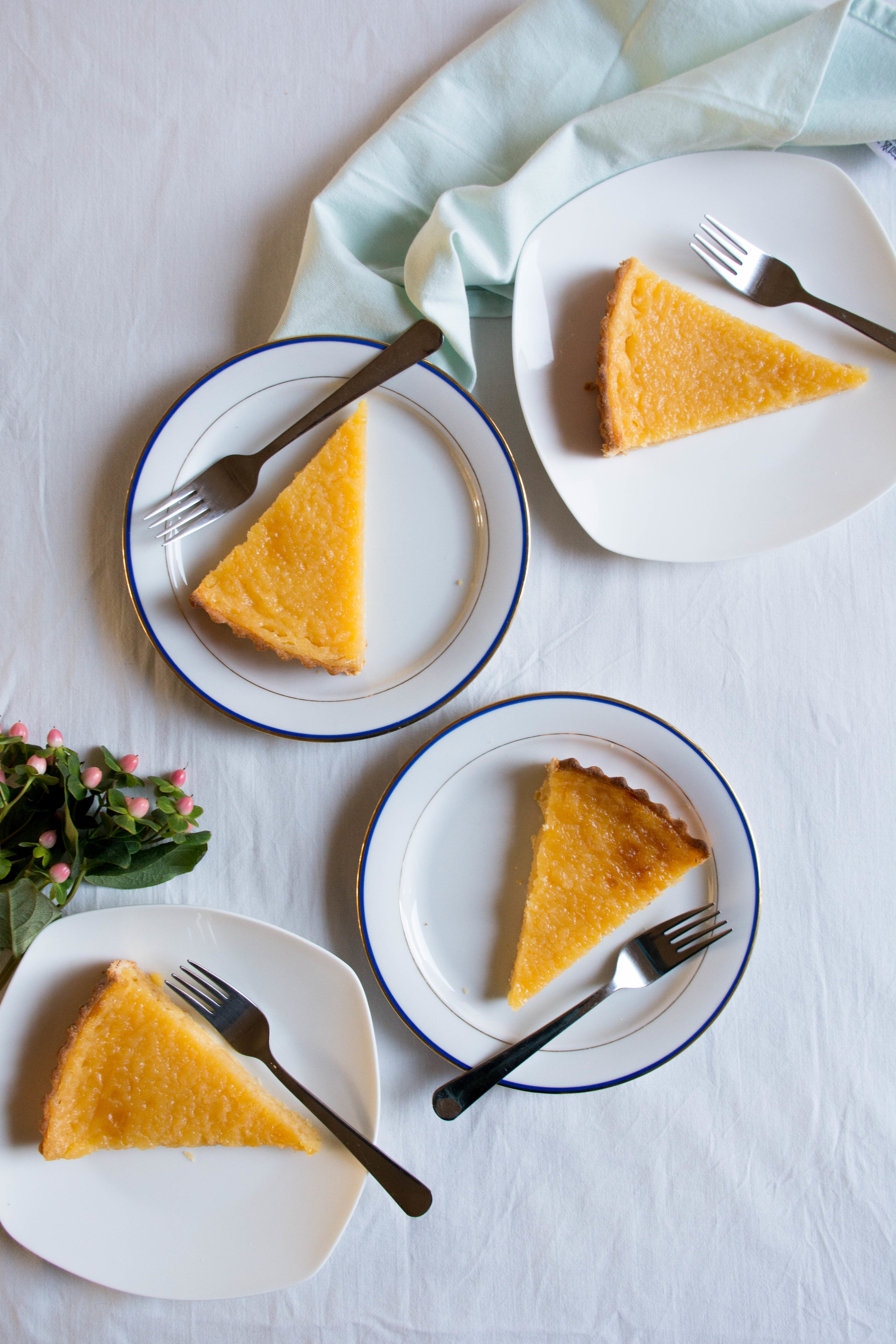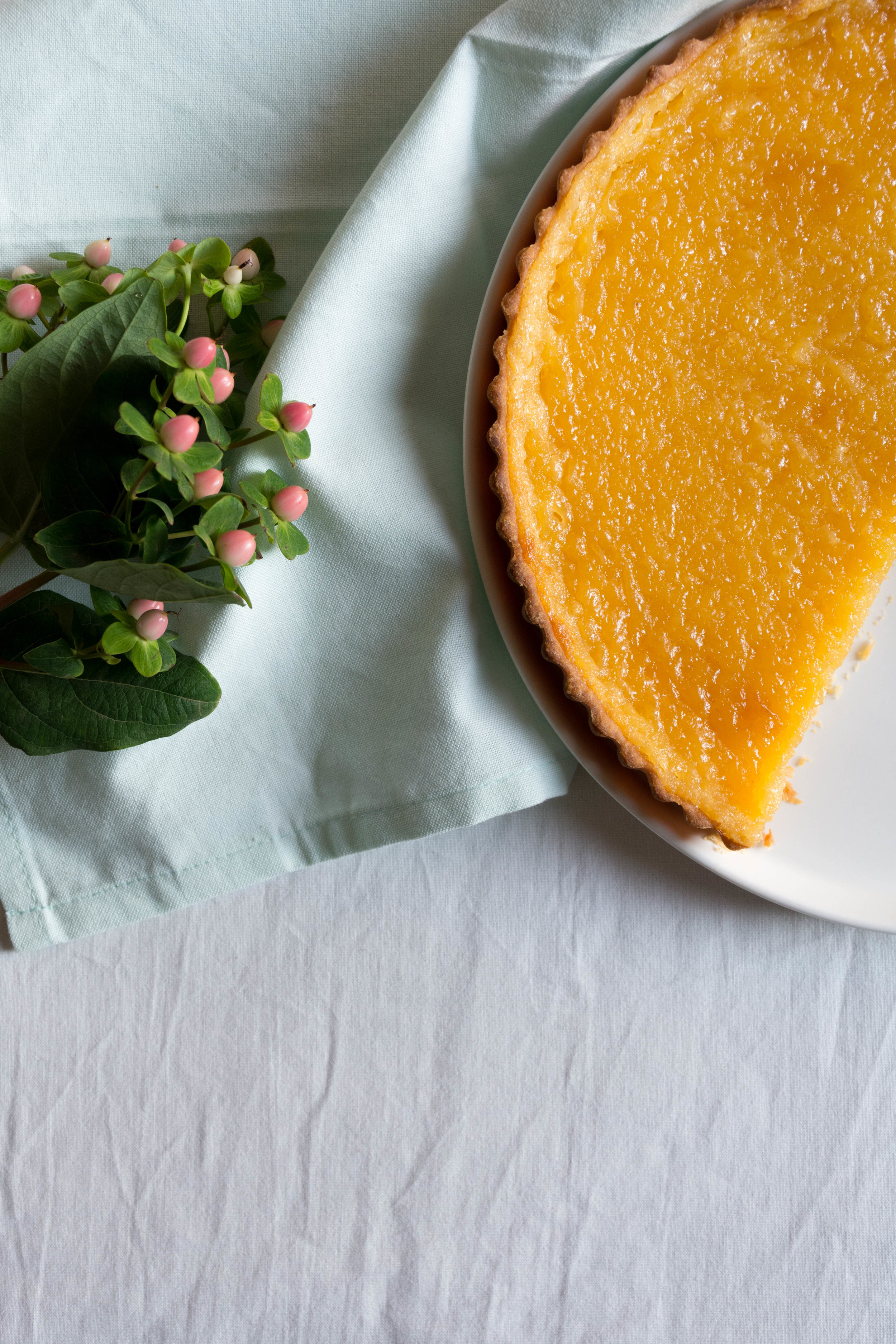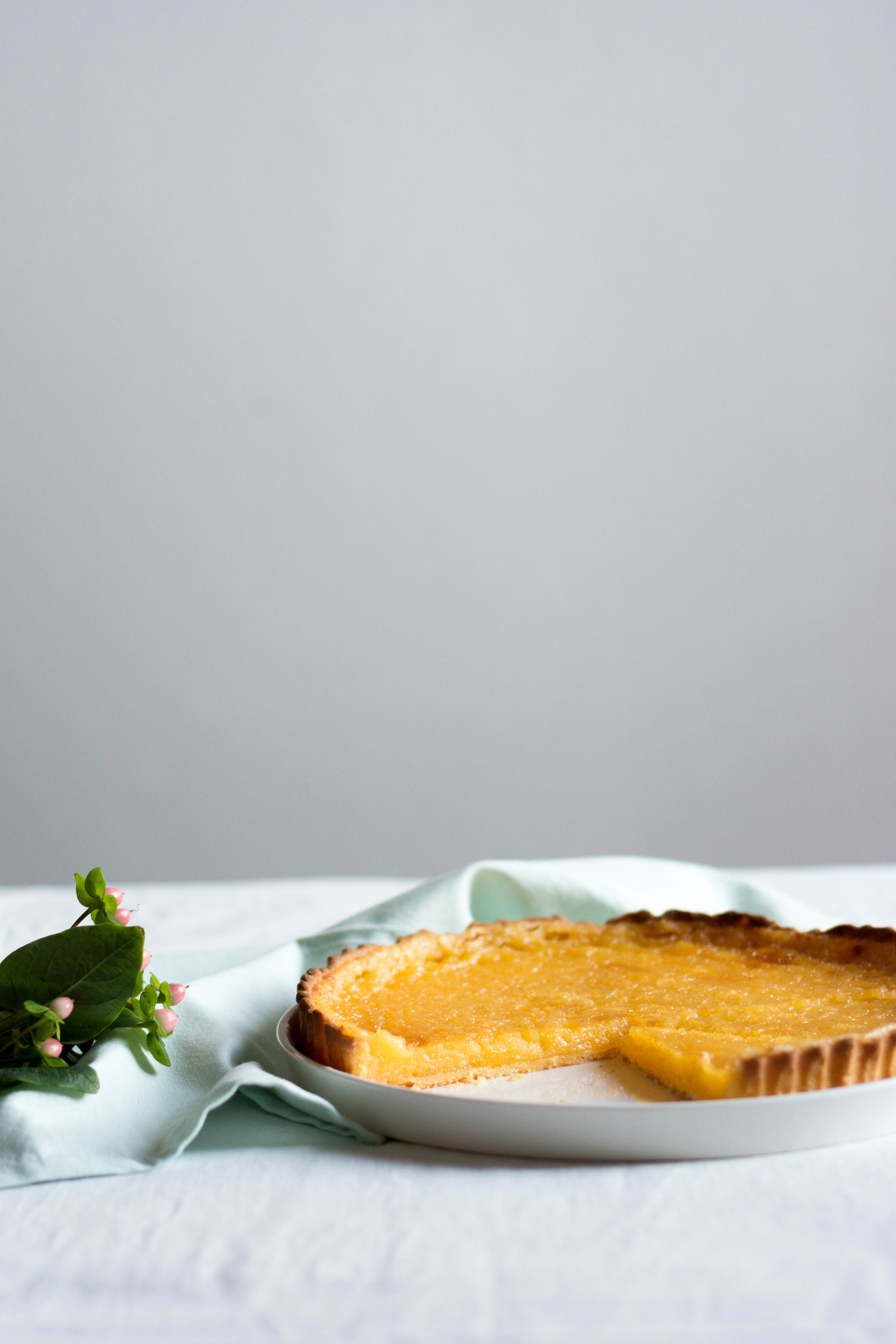When I decided to post my mother's lemon tart as the next of my family recipes, I realized that I didn't really have a story to tell about it. My love for citrus is a pretty recent thing and until a couple of years ago, I used to steer clear of this tart altogether. So I decided to ask my mother for her story.
As it turns out, this tart isn't a family recipe in the strict sense. It finds its origin in a small café in Vézelay, where my mother and aunts made a short pit stop on one of their vacations. Walking down from the city's cathedral, my mom said, she and her sisters decided it was time for a coffee break ... with a little treat, of course. They were so enthusiastic about the tarte au citron they were served, that they asked the owner for the recipe. They took it home with them, tried it for themselves and decided it was perfect. The "tarte au citron de vézelay" has been in our family ever since.
My mother's story got me thinking, though. I've known her to go on short holidays with her sisters for years, mostly to France, but somehow, imagining this scene made me look at it in a different light. I could easily picture them walking from cathedral to café and I could almost hear them talking to each other. Their voices, their intonations, their silences ... I've heard them so often. Yet, what I couldn't grasp or even imagine, was how they experienced those interactions. More particularly, how my mother experienced them.
When I was a child, I wanted nothing more than to have a sister. I wanted someone around who was more like me, so that I wouldn't feel outnumbered all the time. I asked my parents for a little sister repeatedly, as if it were a birthday gift or a Christmas present, not realizing what having a child entailed. Not understanding that my mother was already past her forties. Not seeing that the four of us were already a lot to handle. I don't know exactly when I came to realize that it would never happen, but somewhere along the line I let go of the idea. In the end, I forgot about sisterhood completely. Until I imagined my mother and my aunts walking through the streets of Vézelay.
I'm not sad or disappointed that I never had a sister. In fact, I'm very happy to have grown up the way I did, with three brothers who did everything they could to taunt me, but who also, always, had my back. I don't think I would've wanted it any other way. But thinking of my mother going on holiday with her sisters ... it just struck me that theirs is a relationship that I will never be able to understand. What's it like for my mother to have sisters, some of whom are about 15 years her senior? What was it like for her to grow up with them? What's it like now, going on holiday with them? Does she feel like the little sister, or has their age difference virtually disappeared? Does it even matter?
It was such a strange feeling to realize that, no matter how close I am to these women and no matter how long I observe or interact with them, there are so many aspects to their relationship that are unknown - and unknowable - to me. I can only see them as my mother and my aunts - a relation that, in light of this all, may be more imagined than real. A relation I've constructed from the various actions and interactions I've seen throughout the years, but that probably bears little resemblance to the one they themselves experience. How strange it is to know that they are sisters, yet not to know what it means.
notes
• The tart my mother and my aunts had in Vézelay had a pâte brisée as a base, which is also how my mother makes this lemon tart. I, however, prefer it with a sweeter shortcrust pastry. I think the crisp, crumbly texture and the delicate sweetness of this crust counteract the tartness and creaminess of the filling perfectly. Which is also why it doesn't need any extra sweetness in the form of meringue.
• I adapted the crust from a recipe by Donna Hay and hardly changed a thing. More often than not, though, I find that I don't actually need as much water as Donna Hay's recipe calls for. Since this depends largely on the flour you're using and the size of your egg yolks, I think it's best to add the water one teaspoon at a time and to stop as soon as you see the dough coming together.
• It's best to make the shortcrust pastry the day before and to allow it to rest in the refrigerator overnight.
Tarte au Citron de Vézelay
family recipe - crust adapted from Donna Hay
makes a 24 cm/9 inch tart
for the crust
225 gr all-purpose flour
80 gr powdered sugar
pinch of salt
125 gr unsalted butter, cold and cubed
3 egg yolks
1 tsp vanilla extract
1-3 tsp ice water
for the filling
4 large eggs, lightly whisked
300 gr granulated sugar
80 gr unsalted butter, cubed
80 ml lemon juice (from about 2 lemons)
zest from 1 lemon
2 tbsp heavy cream
how to
for the crust
1. Place the flour, powdered sugar, salt and butter in a food processor and pulse a few times until the mixture resembles coarse bread crumbs. Run the food processor on low speed while you add the egg yolks, one by one, followed by the vanilla extract. With the food processor still running, add the ice water, one teaspoon at a time, until you see the dough coming together. (1 or 2 teaspoons usually suffice for me.) Stop the food processor.
2. Turn the dough out onto a lightly floured surface and use your hands to knead into a large disk. Wrap in cling film and allow to rest in the refrigerator for at least 1 hour and preferably overnight.
3. Grease a 24 cm/9 inch fluted tart pan with a removable bottom. On a lightly floured surface, roll out the dough until about 3 mm thickness. Be sure to turn the dough around as you roll it, so that it doesn't stick to your work surface. Use your rolling pin to lift the rolled-out dough onto the tart pan. Use your fingers to press the dough into the tart pan, then use your rolling pin to roll off all excess dough. Prick the base with a fork and allow the dough to rest in the refrigerator for another 30 minutes.
4. While you wait for the dough to rest, preheat oven to 180˚C.
5. To par-bake the crust, line the tart pan with a piece of parchment paper and fill with baking beans. Bake for 10-12 minutes, until the edges have set. Remove parchment paper and baking beans and return to the oven for another 4-5 minutes. The crust should still be fairly light. Allow to cool on a wire rack.
for the filling
1. Combine eggs, sugar, butter, lemon juice and lemon zest in a heatproof bowl or the bowl of a double boiler. Place on top of a pot of simmering water, making sure that the water doesn't reach up to the bottom of the bowl. Stirring continuously, heat the mixture until it is thick enough to coat the back of a spoon, 10 to 15 minutes. Remove from the heat and stir in the heavy cream.
2. Pour lemon mixture into the par-baked tart crust and bake for another 15 minutes. The lemon curd will bubble up and will start to slightly caramelize on top. That's what you want.
3. Place tart on a wire rack and allow to cool completely before serving. To ensure clean slices, wet your knife with hot water before slicing.





